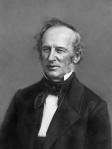Original Stealing Cuba: parts 1, 2, 3, 4, 5, 6 and revisited.
In revisiting the Cuba filibusters, I dropped one thread of the narrative that I should pick back up. Back in May of 1854, Louisiana’s John Slidell stood in the Senate and presented a resolution that the Congress should give Franklin Pierce the power to set aside the Neutrality Acts and generally tell John A. Quitman to go on his merry way. He did so in support of a like resolution by the state legislature that appointed him and on the grounds that the British had a conspiracy (parts 1, 2, 3, 4) with the Spanish to Africanize the island and turn Cuba into a base from which to harass American shipping and foment servile insurrection in the South. Slidell’s resolution did not win the approval of the Congress, even after Pierce asked for extraordinary powers relating to Cuba later on in August.
All of this leaves unanswered why Congress did not grant Pierce those powers. The same Congress assented to at least a reduced form of the Gadsden Purchase (parts 1, 2, 3) so it did not have a dogmatic opposition to territorial expansion. Pierce ran on an expansionist platform and promised more land in his inaugural address. Everybody in 1852 expected the Democracy to pick up where it left off in 1848 and continue painting the map red, white, and blue. Certainly the Kansas-Nebraska backlash complicated those efforts, but at least some Northerners would happily sign on to more American territory still. Most everyone believed that the United States had some kind of natural destiny to dominate the continent.
What happened? Nicaragua happened. As gentle readers might recall (parts 1, 2, 3, 4, 5), few people wrote home from Nicaragua to comment on its remarkable stability and strong government. Internal divisions and rugged terrain did it no favors on those fronts. Yet Nicaragua sat astride a quick route across the Central American isthmus and thus drew the intense interest of major commercial powers like the United States and the United Kingdom keen on skipping the long haul around South America to reach the Pacific. A steamer line already ran down Nicaragua’s San Juan river to Lake Nicaragua and from there wagons and stagecoaches took goods and people the few miles to the Pacific coast. Cornelius Vanderbilt set up a steamer route between New York and the Pacific using Nicaragua to get people to California for the gold rush and his Accessory Transit Company continued to operate that route.
The United States thus had an obvious interest in Nicaragua. The United Kingdom had ill-defined claims to various parts of Central America, including British Honduras (now Belize) and the adjacent Mosquito Coast (now the Caribbean coast of Honduras and Nicaragua). Those claims overlapped with both the Nicaraguan isthmus route and the oft-proposed canal to make a direct sea connection to the Pacific. The Americans very much did not want the British to dominate an eventual canal through their control of its eastern terminus, a prospect made still more dreadful by various bouts of anglophobia in the American political class.
That anglophobia had some informing it. The British had moved into the Mosquito Coast when it looked like the United States might take larger sections of Mexico than it in fact did. The British guarantees to Spain over Cuba fit in here too, as did British efforts to deny the United States a naval base in the modern Dominican Republic, British efforts to preserve Hawaiian independence, British protests over a commercial convention with Ecuador, and real and perceived past efforts to establish some kind of protectorate over Texas. It looked very much like Albion intended to contain the United States and deny it its geographic, racial, political, and religious destiny.


You must be logged in to post a comment.